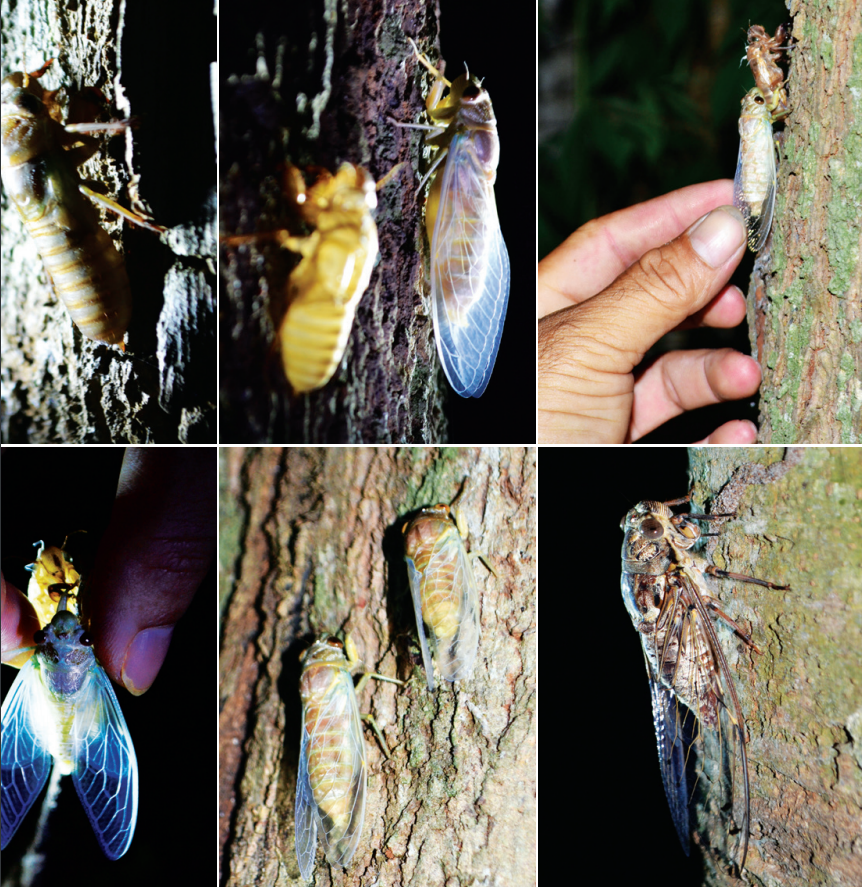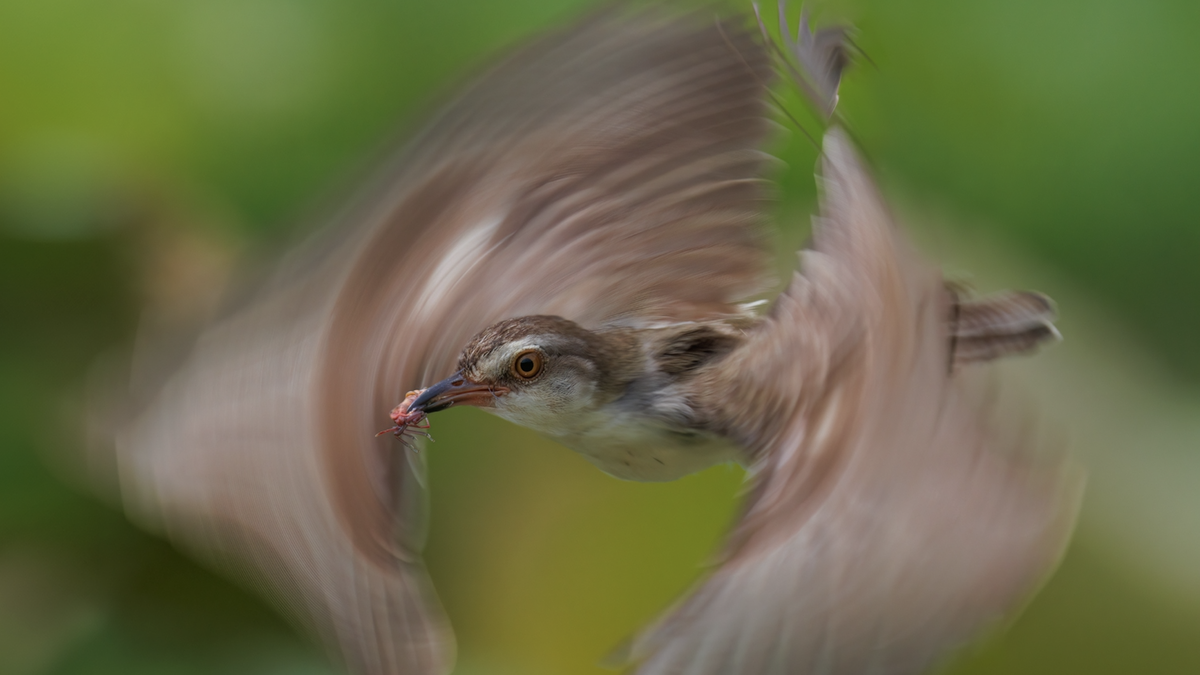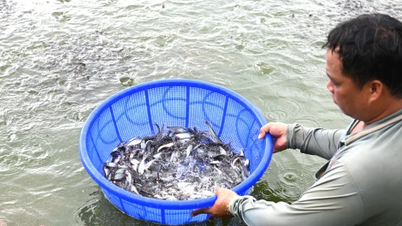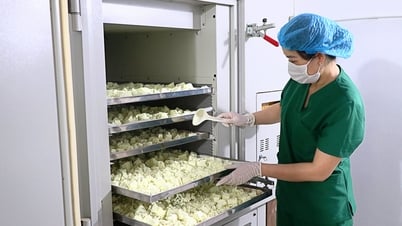As soon as it got dark, Nguyen Van Binh, 38 years old, living in Hoa Thanh town, prepared his luggage for a trip to catch cicadas. He had nothing but a fully charged flashlight and a small used plastic jar. Before leaving, this man poured some diluted salt water into the plastic jar.
“Salt water helps to kill ticks quickly and remove parasites from their bodies before processing them into food,” Binh explained. After preparing his luggage, Binh got on his old motorbike and headed towards the natural forests in the inner city of Cao Dai Tay Ninh Holy See (Long Hoa ward, Hoa Thanh town).
In these forests, there are many ancient trees tens of meters high, with trunks as big as two adults could wrap their arms around, estimated to be hundreds of years old. Interspersed around these ancient trees are many smaller forest trees, about 5-7 meters high.
Next to the natural forest are some yellow cajuput and rubber gardens in the latex harvesting season. In these forests, there are dozens of other young people also diligently hunting for cicadas. Some are holding buckets of salt water, others are holding plastic bags.
They used flashlights to shine on the tree roots to catch the newly molted cicadas. From the ground, the black, naked nymphs, as big as an adult’s little finger, slowly crawled up the tree trunks. When they were about 50-70cm above the ground, they stopped to wait to molt. That was also the time when the cicadas hunters liked it best. They gently grabbed the nymphs by the neck, put them in a bucket of salt water, and wrapped them in plastic.
Any pupa that was not caught, after about 10 minutes, the pupa shell slowly split open, and a young cicada crawled out of the shell. The small, short wings gradually grew larger and longer. Under the flashlight, the white wings appeared transparent. The newly born cicadas were also in the hands of the cicada hunters. These unfortunate insects were put into salt water. They wriggled for a while and then lay still.
Cicada hunting is not as laborious as I thought. Cicada hunters only need to move around an area of forest about 100m2. After searching all the tree stumps in the area, they go back to the first tree stump and repeat the cycle of searching and catching.
The sudden rain at night forced Binh and many others to end their cicada hunting session earlier than planned. However, each person harvested a few dozen cicada pupae and cicadas. Binh brought the insects home, removed their wings, and washed them again. He then marinated them with some spices and put them in a pan of boiling oil.
A rustic dish is almost complete. Mr. Binh said that for decades, every year, after the first few rains of the season, he and some young men in the neighborhood go to catch cicadas. Sometimes they catch a whole bowl, and on bad days, they still catch a few dozen. This type of insect is very delicious, has fatty meat, is nutritious, suitable for processing into food for family meals or as a snack to enjoy with friends.
There are about 2,500 species of cicadas in the world . They live in both temperate and tropical regions. Cicadas are known for their large size, distinctive shape with large heads, and their ability to make sounds throughout the summer.
In the Appalachian Mountains, people in the United States call cicadas dry flies because their shells remain intact and dry after molting. Cicadas do not sting or bite and are harmless to humans. Cicadas are also used in traditional Chinese medicine.
Ocean
Source link



![[Photo] Pink ball and table tennis](https://vphoto.vietnam.vn/thumb/1200x675/vietnam/resource/IMAGE/2025/5/26/d9f770bdfda243eca9806ea3d42ab69b)





















![[Photo] Ea Yieng commune settlement project abandoned](https://vphoto.vietnam.vn/thumb/1200x675/vietnam/resource/IMAGE/2025/5/25/57a8177361c24ee9885b5de1b9990b0e)
![[Photo] French President Emmanuel Macron and his wife begin state visit to Vietnam](https://vphoto.vietnam.vn/thumb/1200x675/vietnam/resource/IMAGE/2025/5/25/03b59c7613144a35ba0f241ded642a59)

































![[Infographic] Vietnam-France Comprehensive Strategic Partnership](https://vphoto.vietnam.vn/thumb/402x226/vietnam/resource/IMAGE/2025/5/26/986f63068ea9413dbbb558ee6c6944f3)



































Comment (0)